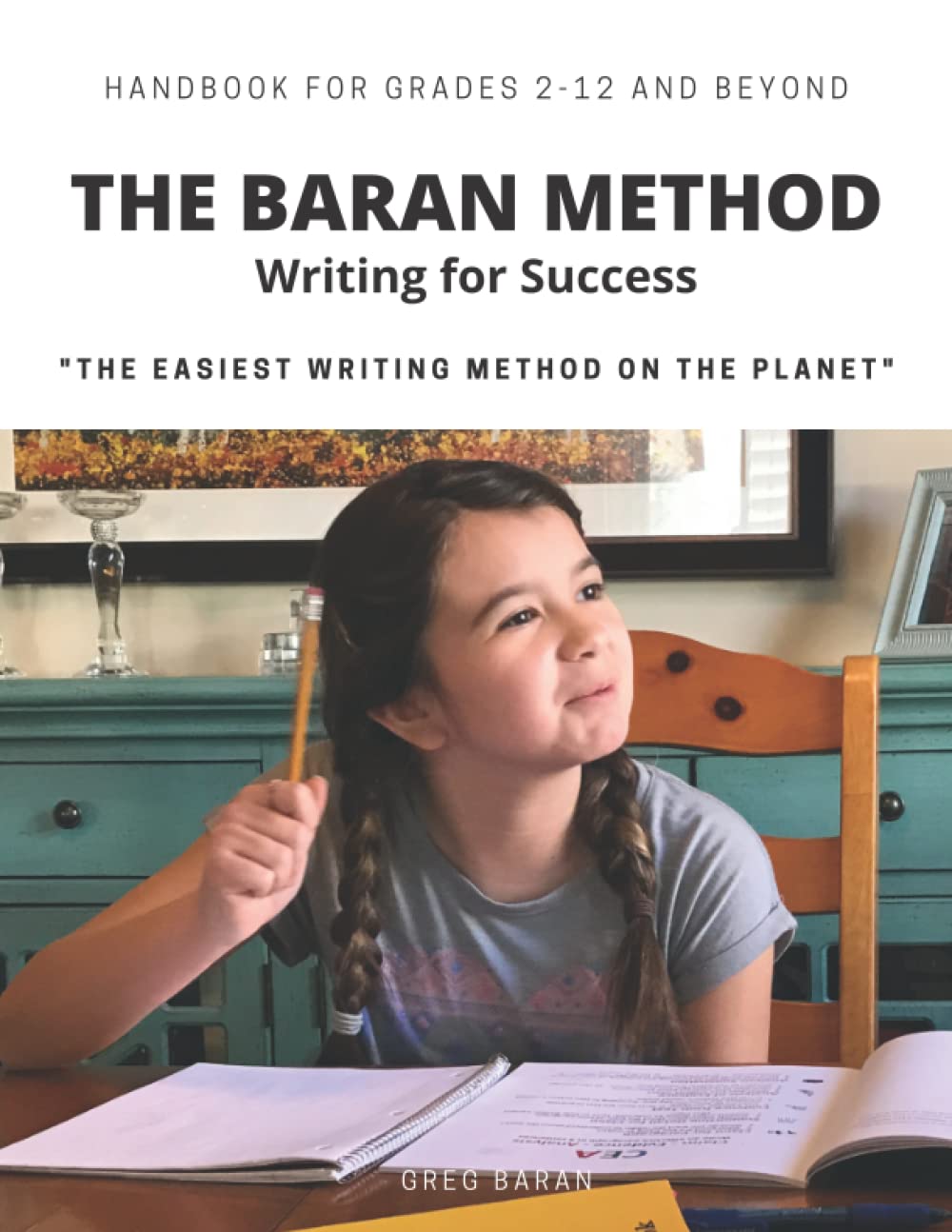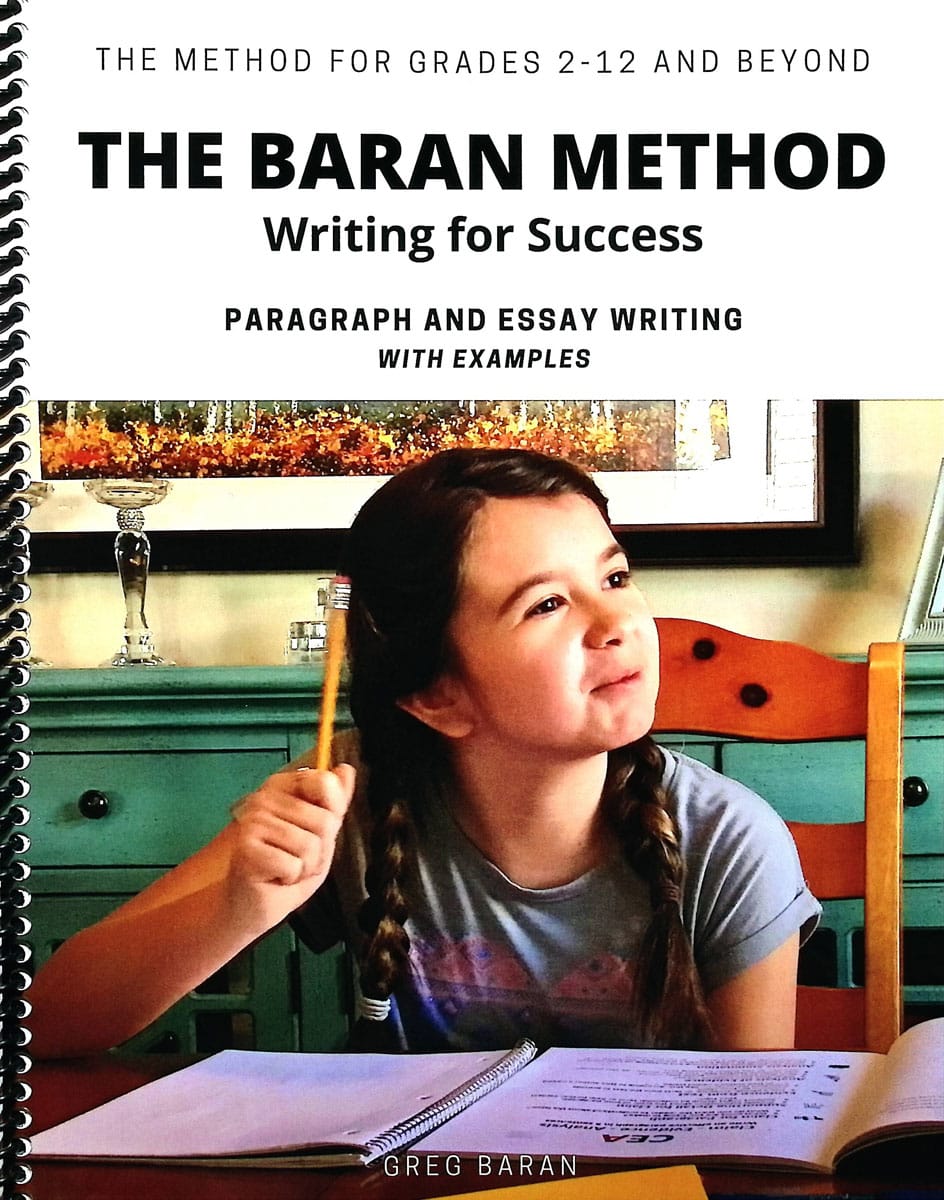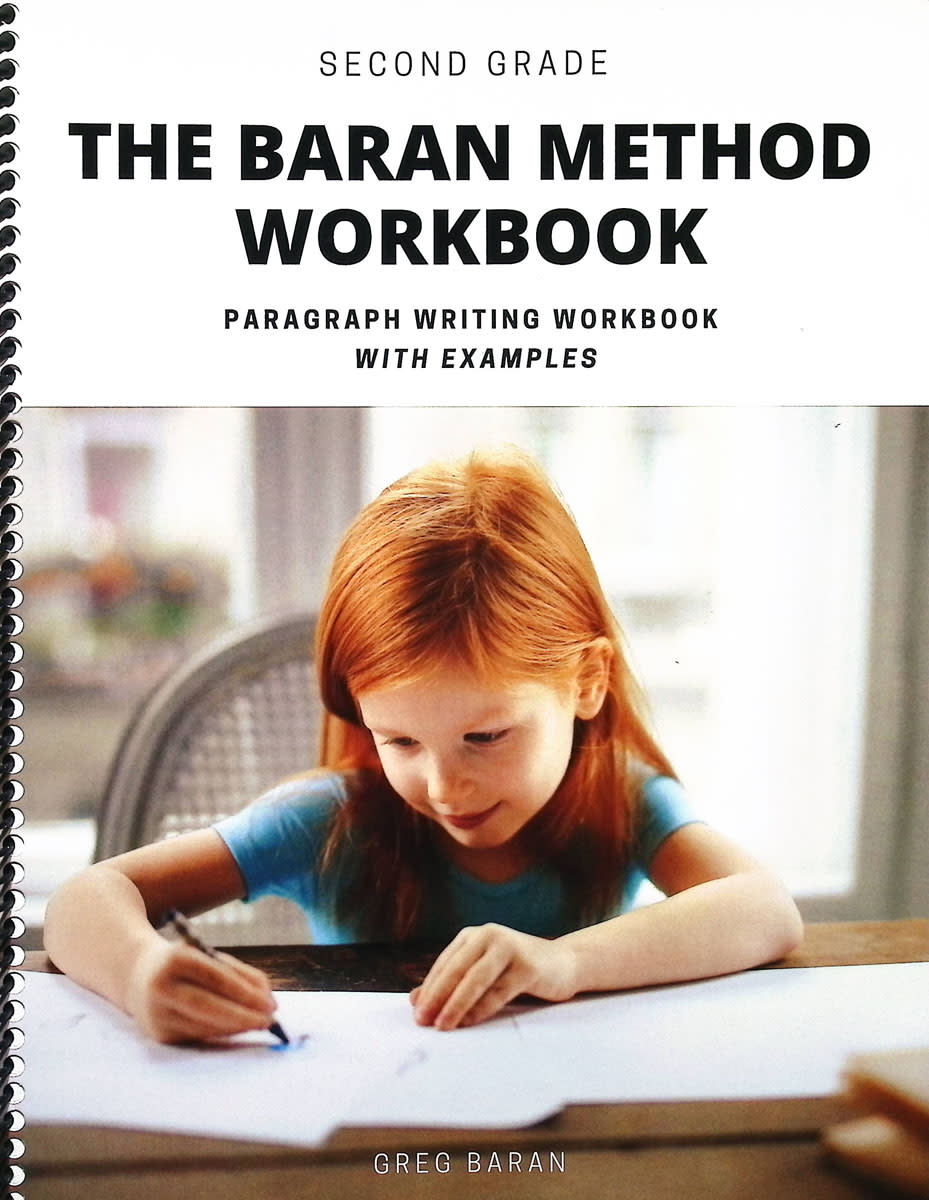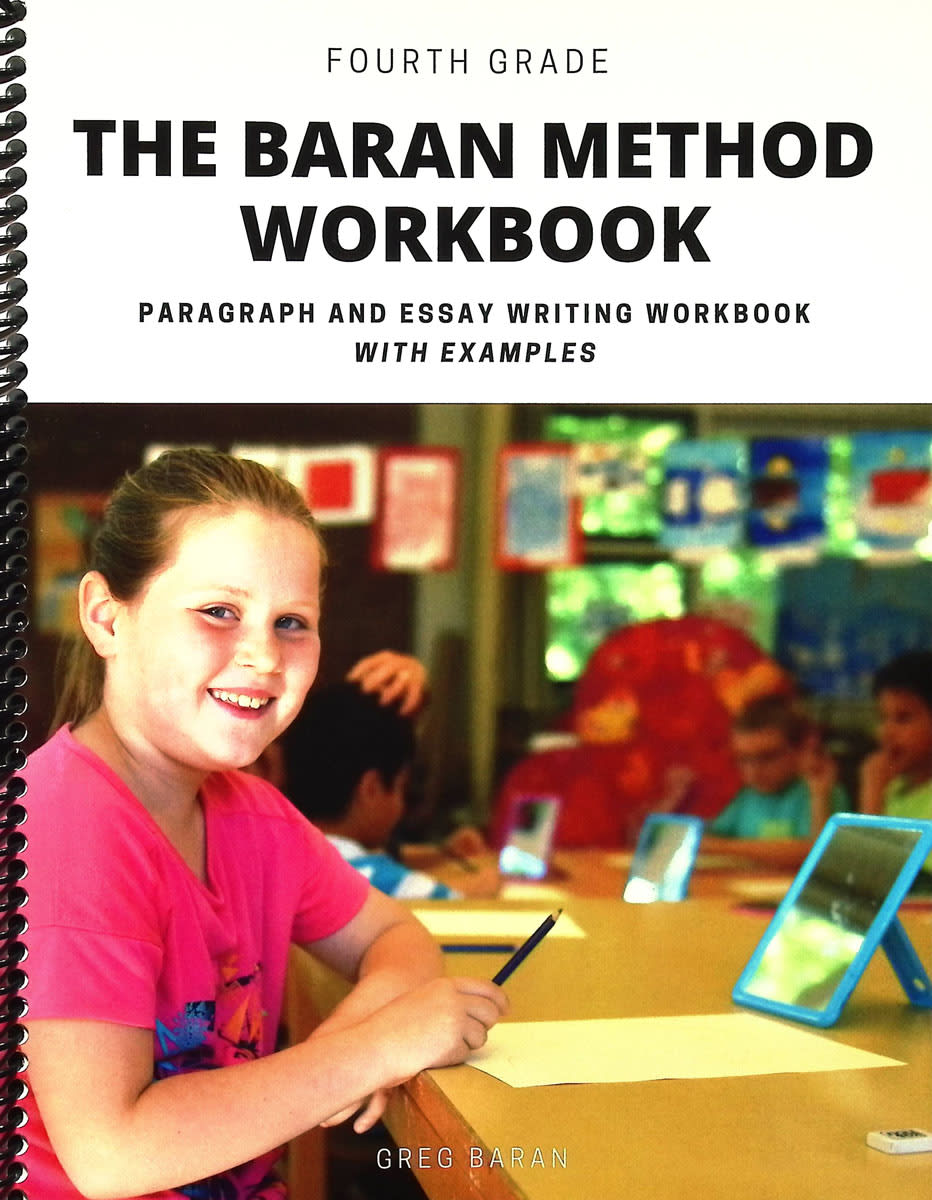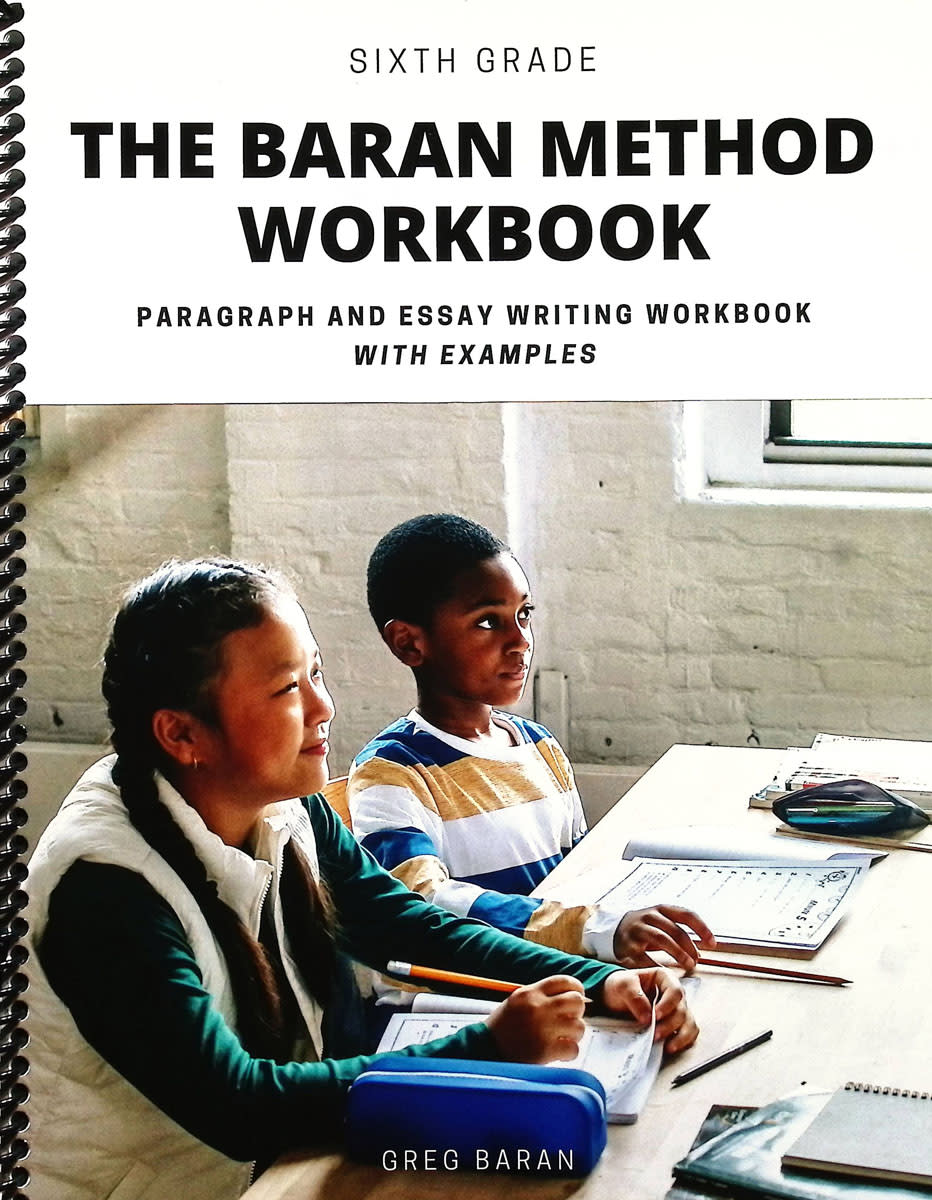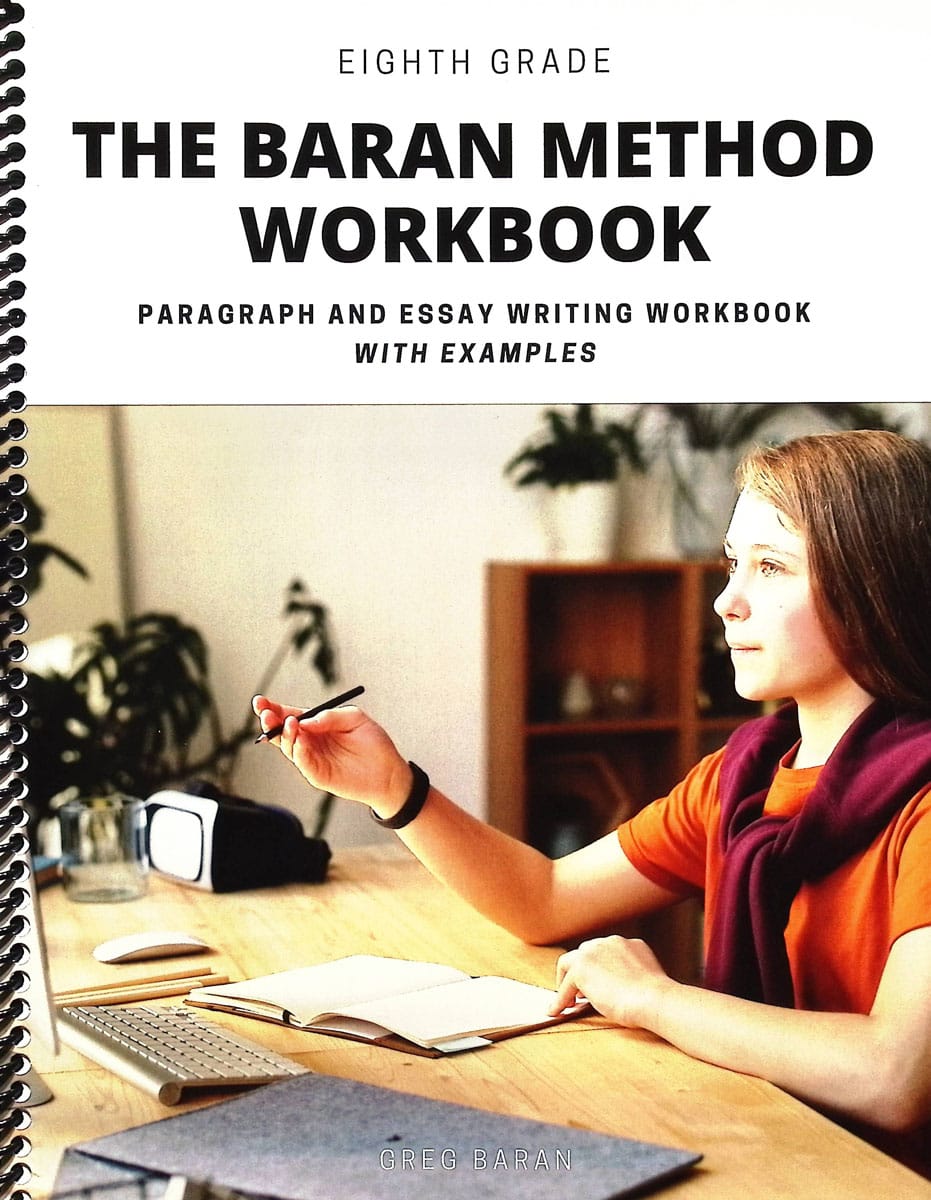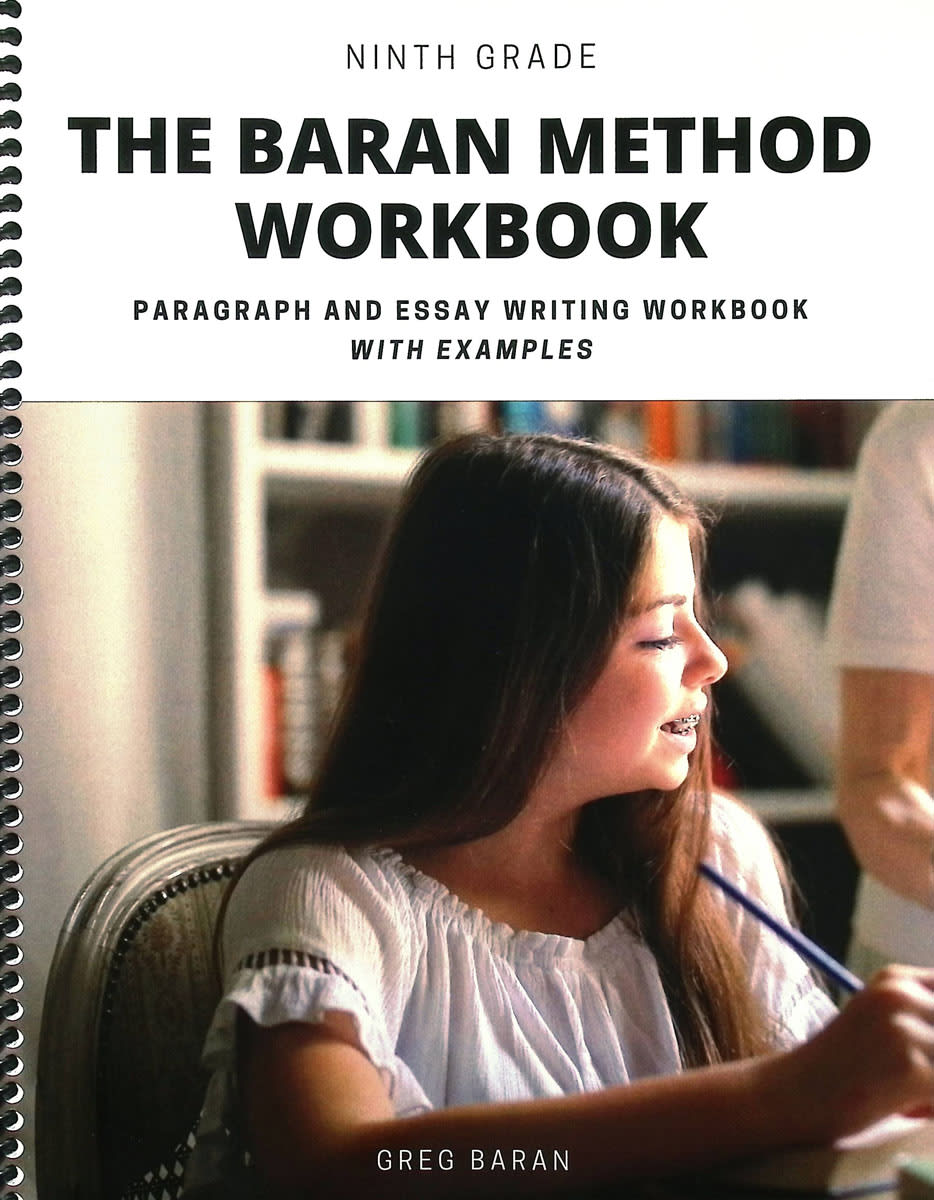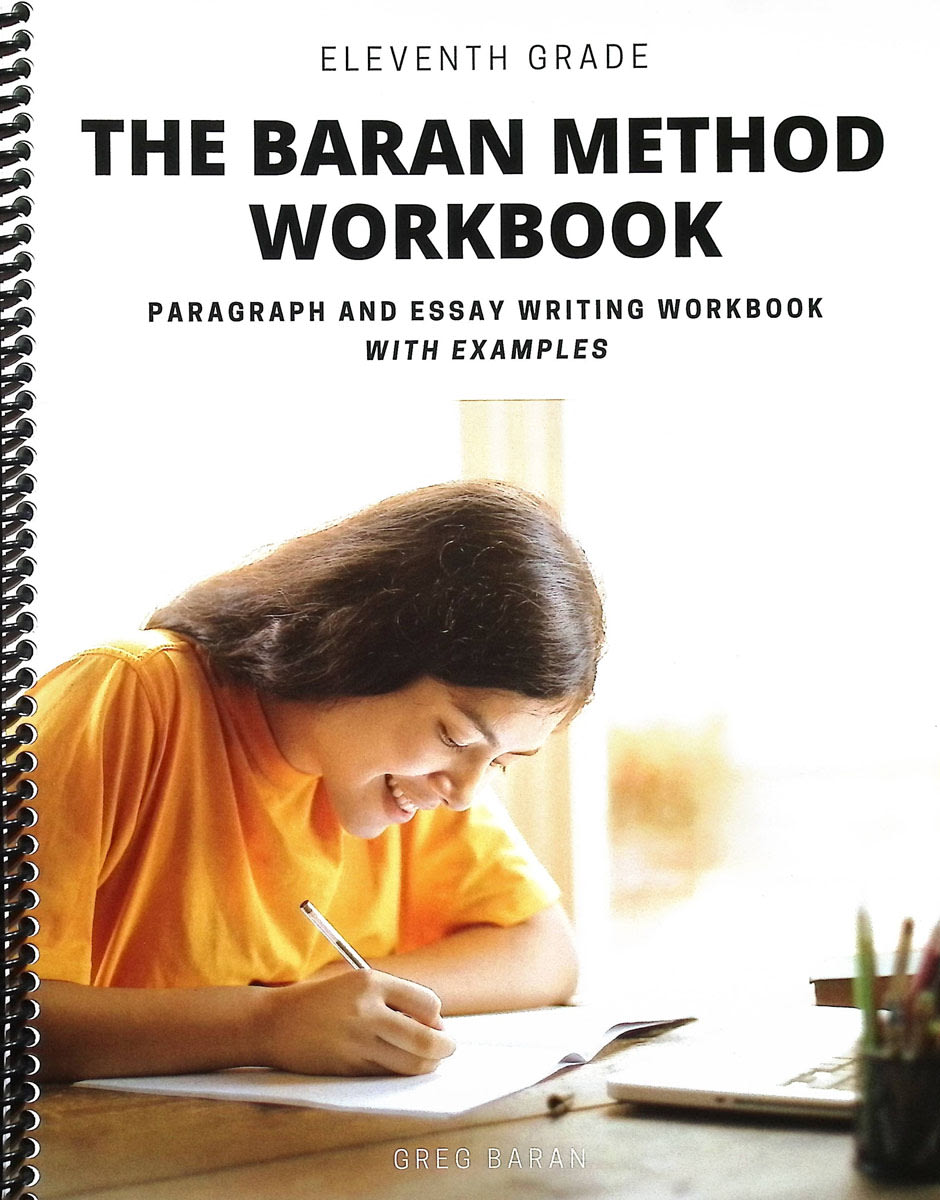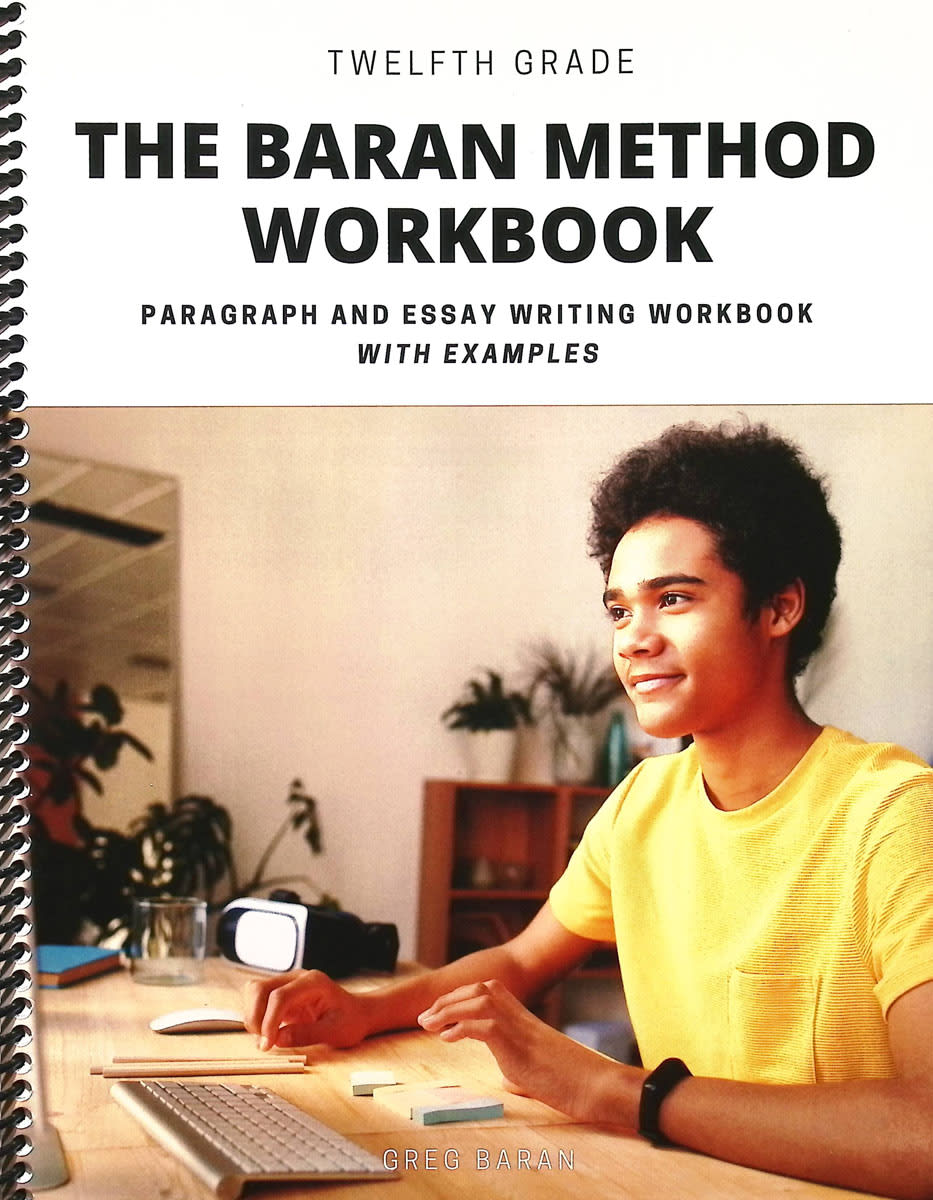Greg Baran came up with a simple process to help students write cohesive paragraphs and essays using a structure that applies to most types of expository writing. This is not a complete language arts course but rather a method for helping students develop a foundational skill for organizing and writing compositions.
The Baran Method: Writing for Success can be used with students in second grade through high school. While you can begin with young students, older students who struggle to write paragraphs or organized essays will also benefit by learning this strategy.
The key item for the course is The Baran Method: Writing for Success, The Method for Grades 2-12 and Beyond. This book explains the method, provides one-page posters outlining each step, presents example stories and essays for students to practice analyzing, and assigns six writing exercises for practice. The book also has “Essay Maps” that help students organize their thoughts, checklists for students working at various skill levels, and self-review and peer-review scoring rubrics.
Additional helpful resources are available online at no extra cost (although you do sign up with an email address). These include more examples, more writing assignments and prompts, printable essay maps, and two helpful videos for instructors. (You can also watch one of the half-hour videos about how the program works on the publisher’s website without signing up.)
How It Works
Baran uses the acronym CEA for claim, evidence, and analysis—the three key elements in a paragraph as well as in essays. Students first learn to write three-sentence paragraphs with one sentence each for the claim, the evidence, and the analysis. Each of these is written (or highighted) in a particular color—blue, green, and red, respectively—so that the three elements visually stand out. You will need whiteboard markers or highlighters for the teacher and highlighters and pens for the students in these three colors. Students might also type on a computer and apply colored fonts to the appropriate sentences.
Depending upon the student’s age and ability, they will expand to five-sentence paragraphs by adding two more sentences: a supporting detail for the claim (also written in blue) and a summation sentence after the analysis (also written in red). The same basic process then expands to multi-paragraph essays using the same color coding.
Once you’ve covered the six writing exercises presented in the book, you can shift to one of Baran’s grade-level workbooks for more exercises that expand the lessons. You really should plan to use one or more of the workbooks since most students need plenty of practice before they will be able to easily structure all their writing assignments that can be created using the CEA model. The workbook lessons include example stories, essays, and poems—both fiction and non-fiction. For instance, the fourth-grade workbook includes “The Selfish Giant” by Oscar Wilde, an article by Baran on “The Vampire Deer,” and the poem “Caterpillar” by Christina Rossetti.
Baran’s suggestion is to use one lesson every two weeks. The example material helps students learn to identify the claim, evidence, and analysis in the pre-written pieces. Sometimes they will identify only one element within the example, such as the theme. Other times, they will be prompted to write a complete paragraph or essay. The books include space for students to write their assignments.
An appendix at the back of each workbook offers additional essay prompts (even for second grade!), sample responses for a few of the assignments, and suggested websites for additional help.
A new teacher resource, The Baran Method: Writing for Success, Teacher Edition Grades 2 - 5, provides parents and teachers with all assignments in the workbooks for those levels. For every reading, the evidence is highlighted, and there are three-sentence and five-sentence writing examples for each assignment. Several examples have more than five sentences to demonstrate the flexibility of the method for advanced students. This teacher edition should be a big help. Similar teacher editions are in the works for grades six through eight and grades nine through twelve.
Online video courses with four lessons per level are also available. Enrollment includes access to weekly “Office hours” for support.
Summary
The Baran Method helps students figure out the basic structure for compositions, and the examples help them discern how other authors employ the structure. Then they get plenty of practice applying it themselves with the writing assignments. Helping students master the underlying structure for their writing assignments should free them to then concentrate on other composition skills.





